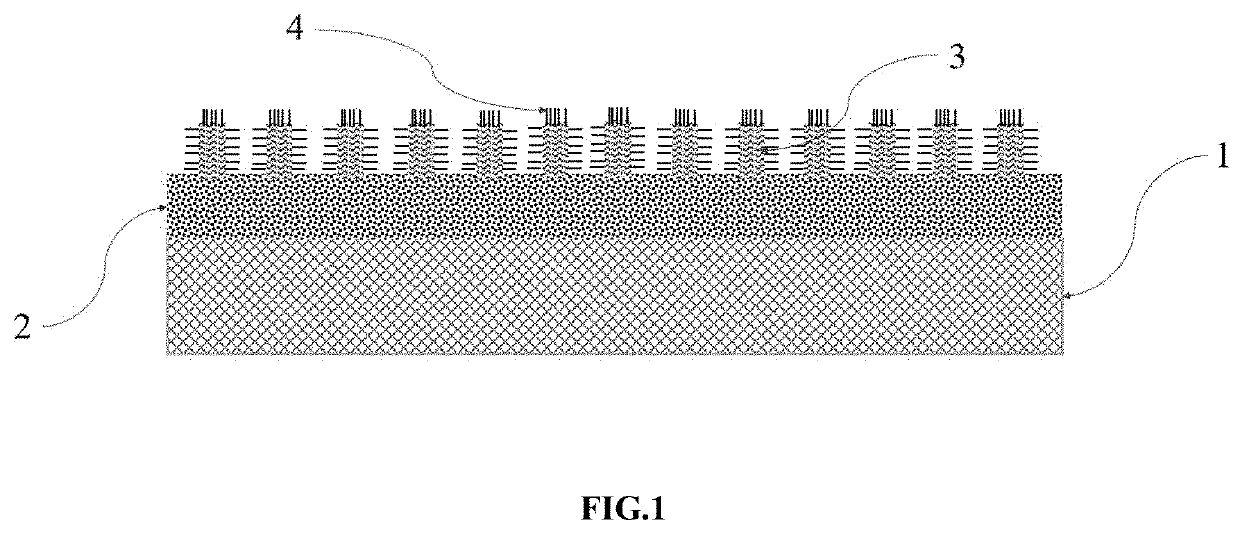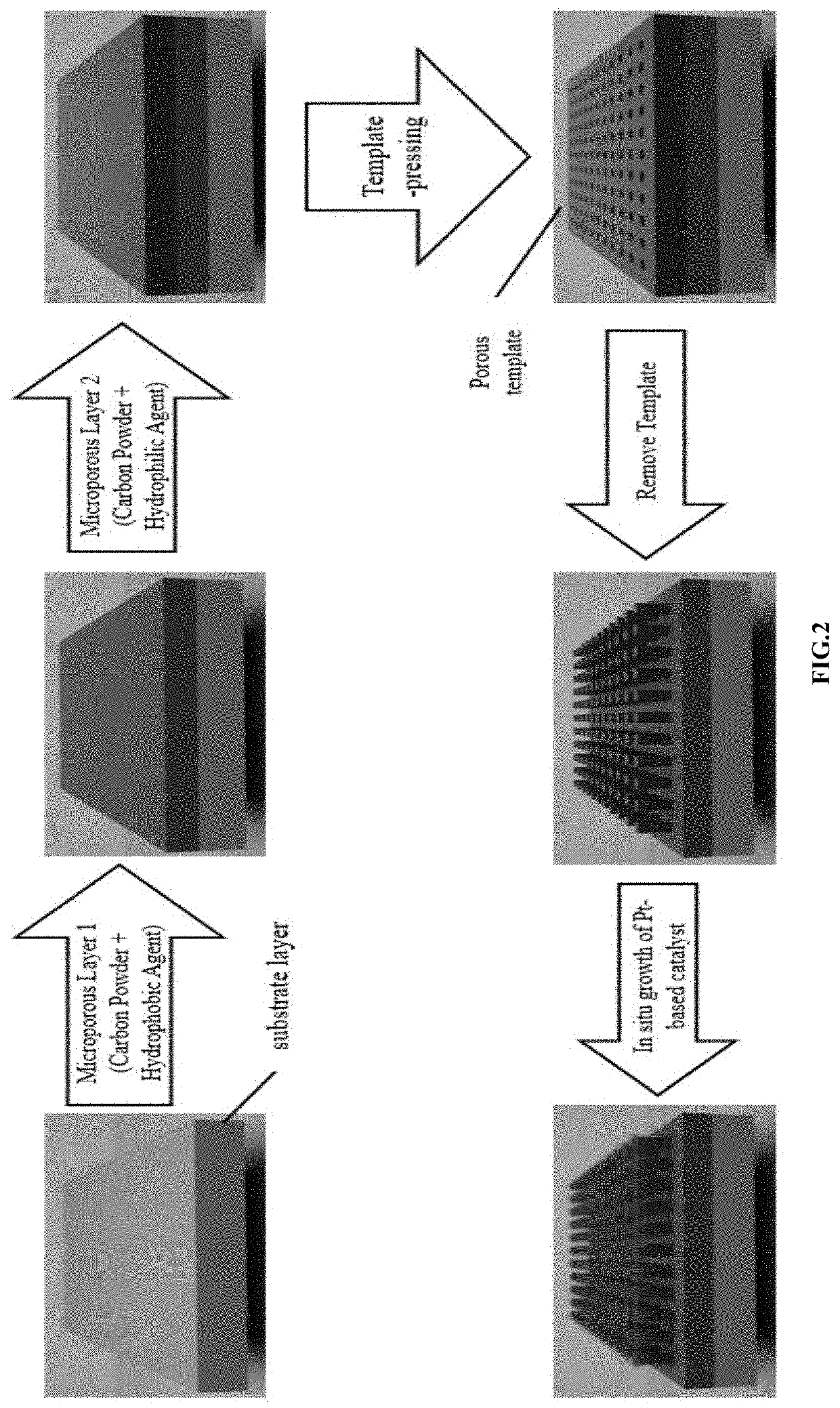Fuel cell electrode with catalysts grown in situ on ordered structure microporous layer and method for preparing membrane electrode assembly
a catalyst and microporous layer technology, applied in the field of fuel cells, can solve the problems of difficult to improve the cell performance comprehensively, high cost and short service life, and the research and development of pemfc technology still faces problems, so as to reduce the transfer resistance of mass, increase the electrochemical reaction area, and effectively reduce the contact resistance
- Summary
- Abstract
- Description
- Claims
- Application Information
AI Technical Summary
Benefits of technology
Problems solved by technology
Method used
Image
Examples
embodiment 1
[0042]A fuel cell electrode with platinum nanowires grown in situ on an ordered structure microporous layer is prepared by referring to the flow chart and the process shown in FIG. 2, and a single cell test is performed. The main steps are as follows.
[0043](1) Preparation of the ordered structure microporous layer: (a) dispersing acid-treated carbon powder (Vulcan XC-72R), polytetrafluoroethylene (PTFE) and NH4Cl in an isopropanol dispersion liquid; ultrasonically homogenizing it, and spraying it uniformly onto the surface of hydrophobic treated carbon paper; drying it for 2 hours at 70° C.; sintering it in a 370° C. muffle furnace for 30 minutes; taking it out, cooling it, weighing it and calculating to obtain a hydrophobic microporous layer with a carbon powder loading of 1-1.5 mg cm−2 and PTFE: C=15 wt. %. (b) dispersing acid-treated carbon powder (Vulcan XC-72R), Nafion and NH4Cl in the isopropanol dispersion liquid; ultrasonically homogenizing it and spraying it uniformly onto ...
embodiment 2
[0047]The template parameters for preparing an ordered structure microporous layer are pore diameter 1 μm, pore spacing 2 μm, and other relevant parameters in the MEA are the same as those in Embodiment 1. The cell test conditions are the same as in Embodiment 1. The test results show that the current density can reach 1.0 A cm−2, and the maximum power density can reach 0.716 W cm−2 at the working voltage of 0.6 V.
embodiment 3
[0048]A fuel cell electrode with platinum nanorods grown in situ on an ordered structure microporous layer is prepared by referring to the flow chart and the process shown in FIG. 2, and a single cell performance test is performed. The reducing agent for the in situ growth of the platinum catalyst is ascorbic acid. The obtained catalyst manifests itself in the morphology of a nanorod. Other relevant parameters for the MEA are the same as those in the Embodiment 1, and the cell test conditions are the same as those in Embodiment 1. The test results show that the current density can reach 1.0 A cm−2, and the maximum power density can reach 0.713 W cm−2 at the working voltage of 0.6 V.
PUM
| Property | Measurement | Unit |
|---|---|---|
| length | aaaaa | aaaaa |
| length | aaaaa | aaaaa |
| diameter | aaaaa | aaaaa |
Abstract
Description
Claims
Application Information
 Login to View More
Login to View More - R&D
- Intellectual Property
- Life Sciences
- Materials
- Tech Scout
- Unparalleled Data Quality
- Higher Quality Content
- 60% Fewer Hallucinations
Browse by: Latest US Patents, China's latest patents, Technical Efficacy Thesaurus, Application Domain, Technology Topic, Popular Technical Reports.
© 2025 PatSnap. All rights reserved.Legal|Privacy policy|Modern Slavery Act Transparency Statement|Sitemap|About US| Contact US: help@patsnap.com


